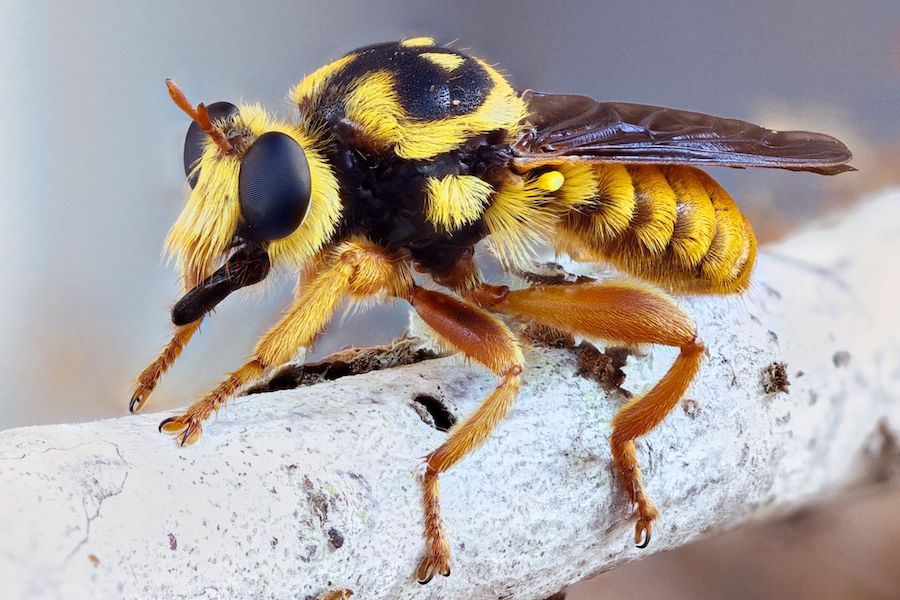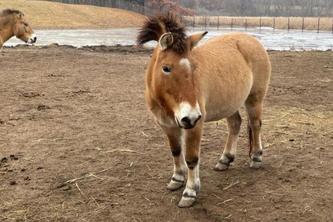
The saffron robber fly (Laphria saffrana) is an extremely fast bee-colored hunter that has to determine, while perched, which insects it wants to chase and eat. This is complicated by the fact that its eyes have poor resolution, especially at distances greater than one meter. It has a varied diet, but if it targets the wrong bug, it could waste a lot of energy chasing after a poisonous meal.
Paloma Gonzalez-Bellido, associate professor in the College of Biological Sciences, has a penchant for tricking some of the deadliest hunters of the insect world. Over the years she has fooled a variety of flying insects into pursuing decoys (in the form of little black beads) and has learned a great deal about their mid-air maneuvers. But when she began studying the saffron robber fly, she was surprised to find they wouldn't fall for the bead trick.
Along with graduate student Siddhant Pusdekar and collaborator Jennifer Talley of the Air Force Research Laboratory, Gonzalez-Bellido embarked on two years of research into how this beetle specialist hunts. They discovered how these flies can distinguish nutritious beetles from dangerous mistakes, and their findings are newly published in Current Biology.
The research team found:
- By observing flashes of sunlight reflected from a target’s wings, the saffron robber fly determines the wingbeat frequency of potential prey to decide which insects to pursue.
- Before taking off, they use saccades, or short bursts of head movements, to track the target’s wingbeats and predict its future location. Known as a predictive saccade-and-fixate strategy, this is the same process used by athletes when attempting to intercept a pass.
- The flies have evolved an acute zone, which is an area on the retina with higher acuity, so that they can better see their prey. Their head tracking system keeps this part of the eye always pointed at the prey, so the fly has more information to decide which meal it should chase.
This study combined field behavioral experiments, high speed video recordings and microCT scans of the flies. When the saffron robber flies were shown an LED light flashing at various frequencies, they only took off after the ones that flashed at the same frequency as beetle wings.
“This species challenged any preconceived notions we had about the eating habits of predatory flies,” said Talley. “We had to literally get down in the dirt to truly understand how these flies perceive their world and decide what is food and what is not.”
This research may help develop more sophisticated technologies to aid aerial navigation. Further investigation of the underlying neural architecture will reveal how Laphria saffrana perform these rapid tasks with simple nervous systems.
Video clips from the study are available on request. Research was funded by the Air Force Research Laboratory and the University of Minnesota.
- Categories:
- Science and Technology
- Animals
- Research





